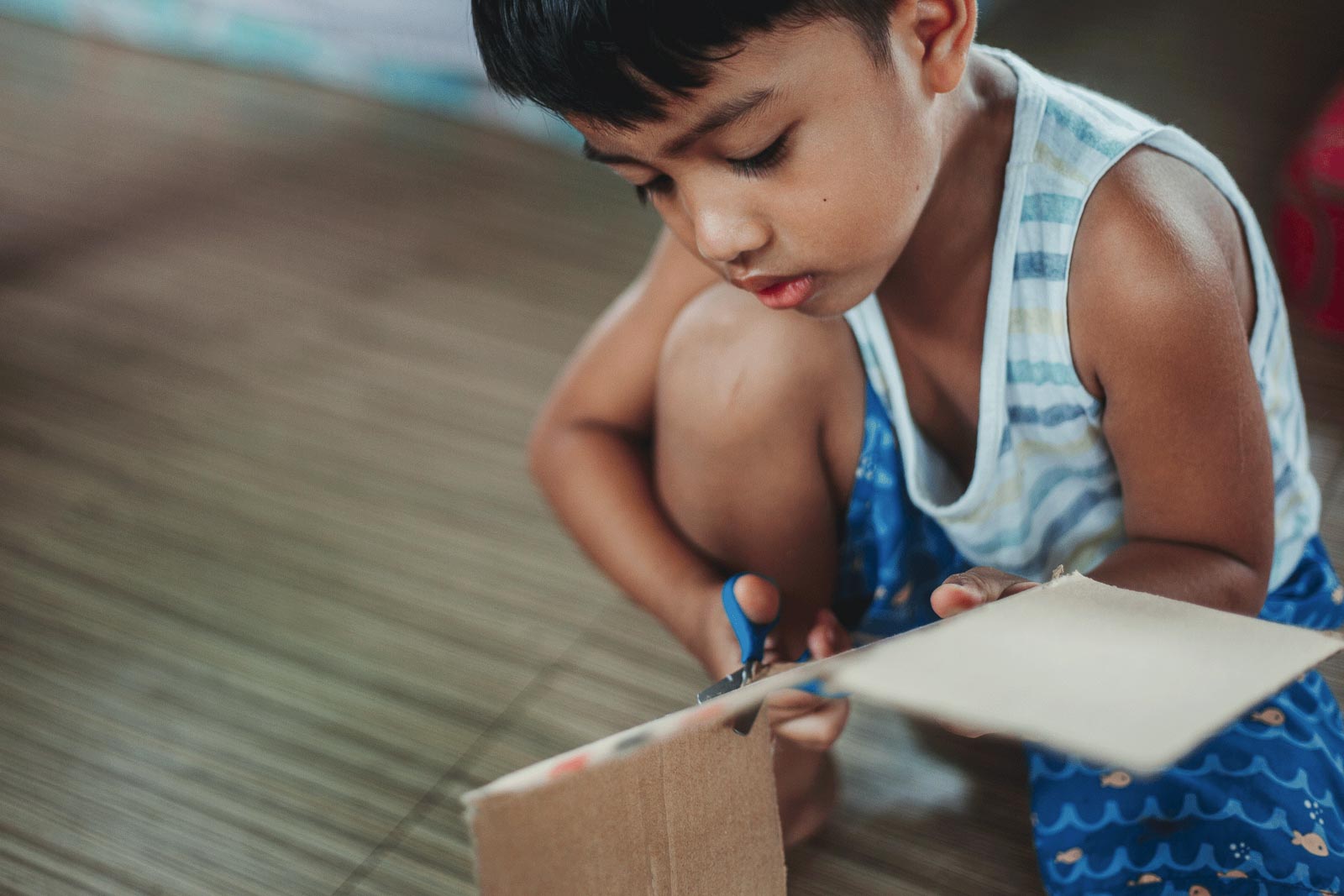
Children who are interested in design will construct elaborate creations from various materials. They will think passionately about the end result and use innovation to solve problems.
The Early Years Learning Framework (EYLF) promotes design. When children make things using natural materials, processed materials or technologies (4.4), they are solving problems, experimenting, hypothesising, researching and investigating (4.2). Design requires imagination, creative thinking and unconventional solutions (4.1).
Learning experiences
Solve a problem
Educators can help children identify and solve a problem in their lives. There are many problem-solving techniques and processes, and educators can teach some of these to their children:
- Empathise: Conduct research to discover what problems are affecting other people. The children could conduct a survey or have a discussion with their friends.
- Brainstorm: Think about possible solutions to the problem. Creative, incomplete and unexpected ideas are welcome.
- Make something real: Start implementing possible solutions by sketching ideas and building rough prototypes.
- Test and evaluate: Put your plans and prototypes into action. Do any of them solve the problem? Observe what happens and gather feedback from friends.
- Refine: Make adjustments to improve your plans and prototypes. Continue to test, evaluate and refine until you are happy with the final solution.
Design a child-friendly environment
Involve children in the design or improvement of a space they love, like their classroom or outdoor area. Brainstorm ideas on a piece of paper and put the best ideas into action.
- How can we make this space more suitable for children?
- How can this space be more comfortable, fun, and easy to move around?
- What do we want this space to look like?
- Who can help us with our ideas?
Make stuff
Children can build products as individuals or in small groups. Try simple projects that allow children to experiment with and test different materials and techniques. These include:
- boats
- paper aeroplanes
- shadow puppets
- shelters and cubby houses
- toys.
Play with a busy box
Many years ago, the television show Play School featured a "busy box". Early childhood educators can easily introduce one to babies and toddlers. All you need is a cardboard box filled with bits and pieces. Keep it in a cupboard and bring it out on rainy days.
Cath Armstrong writes about busy boxes in her blog:
"We always had a busy box, tucked under the coffee table. The kids new it had lots of interesting and exciting goodies in it, just waiting to be turned into cubby houses and puppets and farm animals and robots and doll clothes and kites and the list goes on. Busy Box creations were limited only by their imaginations."
Explore design careers
Design is everywhere. Children are surrounded by it. Early childhood educators can show children real-life products, environments and systems that have been designed by professionals (e.g. toys, machines, buildings, clothes and tools). The children can then research different careers in design:
- Architecture and house design
- Town planning
- Engineering
- Fashion design
Draw a plan
Drawing is an excellent way of visualising and testing something you want to happen. Ask children to draw a plan of something they want to make. They can use this opportunity to think about the materials they will need, how it will look and function, and the challenges that may arise.
Learning environments
Start your own makerspace
Makerspaces are places within communities where people can come together to make things and solve problems. They can be very social places, where creative people can collaborate, source ideas, and work alongside each other.
Another important feature of a makerspace is access to equipment, like 3D printers, woodworking tools and sewing machines. You may already have a makerspace within your community that has equipment like this, like your local library or Men's Shed.
Early childhood organisations can establish their own child-friendly makerspace. Set one up in the corner of your classroom. Include a wide range of items that can be used together:
- Cardboard, plastic and foam packaging.
- Fabric, lace, ribbon, wool, string, wire and rope.
- Buttons, beads and bottle caps.
- Rubber bands, hole punches and paperclips.
- Old magazines, brochures, Christmas cards and gift wrap for cutting up.
- Scraps of wood and metal.
- Glue, sticky tape, masking tape and duct tape.
- Measuring tape, rulers, and magnifying classes.
- Lego and Mobilo.
Family and community connections
Start a multigenerational design project
A multigenerational design project involves children building things and or solving problems with people from different generations. This could be grandparents, high-school students, members of the local council, design professionals, or community volunteers.
The project could be something long-term and elaborate, like the design of a new playground. Or you can keep things simple by settling up a tinkering corner or makerspace for children and their families.
Young children have creative minds. And adults have developed skills and knowledge over many years. Big problems can be solved when children and adults work together.
Interactions and discussions
Educators can encourage children to verbalise their internal thoughts while they are making something.
- Ask what they are doing and why.
- Encourage them to visualise and describe the end result.
- Ask them to explain their design process.
Educators can help children think like designers by asking thought-provoking questions:
- What is your goal?
- What are the challenges?
- What worked? What didn't work?
- How can we improve the design?
- What if…?
Resources
Picture books
- Most Magnificent Thing by Ashley Spires
- The Imagineer by Christopher Cheng and Lucia Masciullo
Websites
